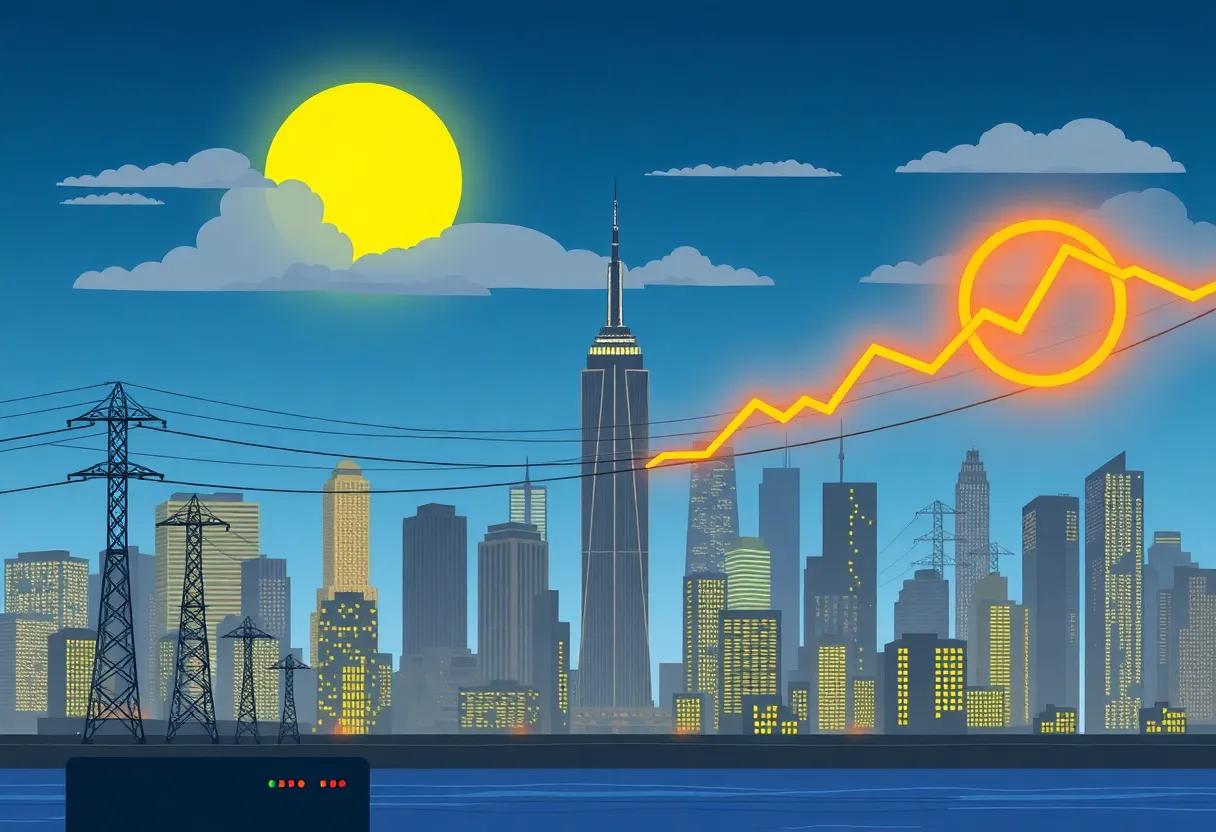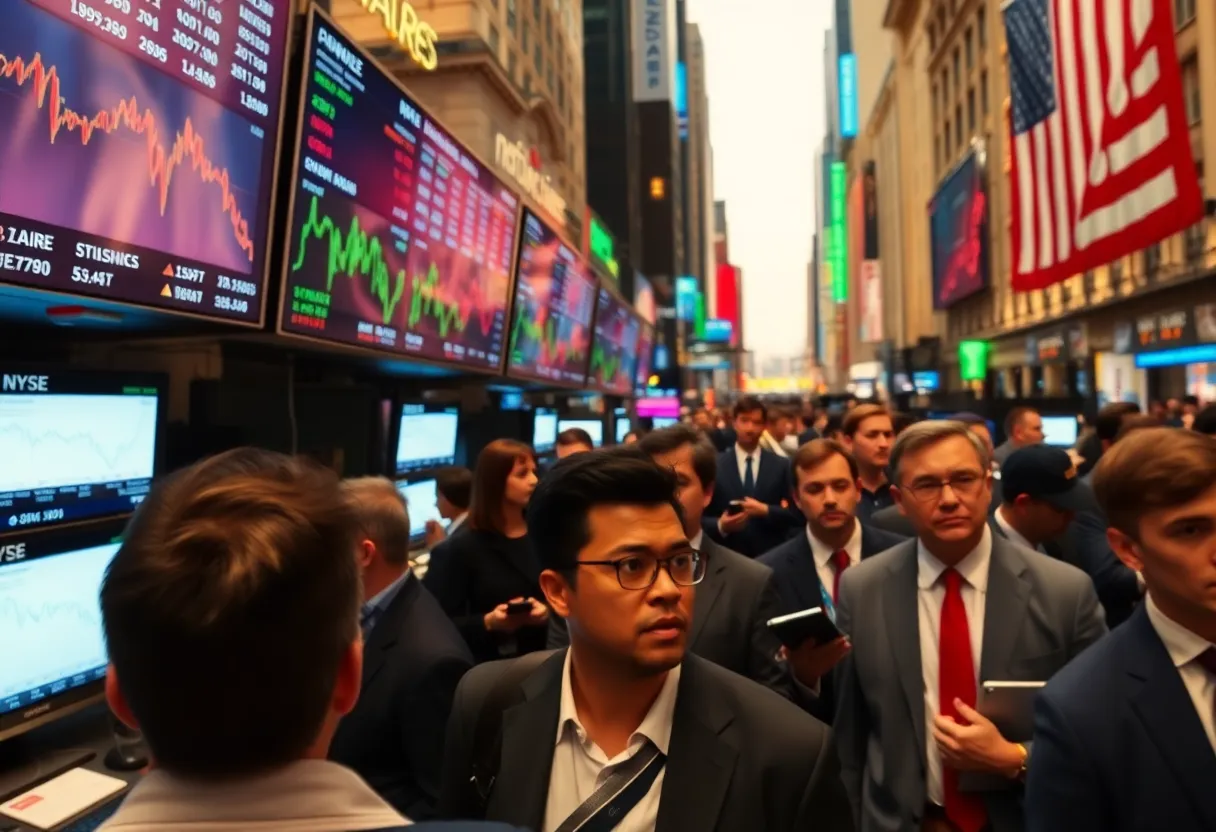News Summary
New York is grappling with rising energy costs impacting its residents, particularly due to the influence of large-scale electricity consumers like AI and cryptocurrency data centers. A recent hearing highlighted the disproportionate burden on utility customers and the systemic issues affecting pricing structures. Assemblymember Didi Barrett proposed legislation to enhance accountability for large energy users, amid calls for a reevaluation of the state’s energy system to favor public service over corporate profits. With increasing demand projected, the urgency for reform is clear.
New York State is confronting rising energy costs that are disproportionately impacting its utility customers, as revealed during a hearing held by the New York State Assembly Energy Committee on October 25, 2025. The committee scrutinized the growing influence of large-scale electricity consumers, particularly artificial intelligence and cryptocurrency data centers, on the state’s electric grid.
The Climate and Community Institute and Public Grids produced a report highlighting that the current design for electricity rates favors private profits over universal public service, resulting in sharp increases in utility bills for residents. With recent estimates from the New York Independent System Operator (NYISO) projecting a potential power shortfall of around 1,600 megawatts by 2030, the urgency for a systemic change is palpable.
As of now, there are 36 projects seeking interconnection within the state, which translates to a potential demand surge of over 10,000 megawatts. National Grid is currently assessing 10 active applications that amount to a total of 2.28 gigawatts of new demand; 65% of this demand is attributed to manufacturing and industrial projects, while 35% is linked to data centers.
Reports indicate that one in four New Yorkers struggles to keep up with their utility bills, a situation exacerbated by rising rates that appear to prioritize corporate interests. Additionally, the ongoing federal government shutdown has compromised the accessibility of vital programs such as SNAP and LIHEAP, further straining vulnerable households. The Assembly’s hearing focused on who will shoulder the burden of the infrastructure upgrades necessitated by the increasing demand from data centers.
Utility representatives claimed that under the current regulatory framework, large consumers are already responsible for the interconnection costs associated with their energy demands. This principle, often referred to as “beneficiary pays,” ensures that large new loads cover the infrastructure costs they create, thereby insulating residential customers from steeper rates. However, there is skepticism about whether this principle is sustainable in the face of escalating wholesale prices and growing infrastructure requirements.
Assemblymember Didi Barrett highlighted the burden placed on ratepayers, noting that customers in upstate New York are facing additional costs, with some reports suggesting they are paying an extra $88 annually due to large-scale cryptomining operations. Notably, major tech companies such as Amazon, Google, Meta, and Microsoft were absent from the hearing.
In response to these issues, Barrett proposed the Accountable Costs for Data Center Act (S8540/A9039A) to introduce a new classification for large energy users. This initiative aims to enhance accountability in energy costs and ensure transparency. Additionally, Republican Assemblymember Phil Palmesano called for clarity regarding utility surcharges that arise from green energy mandates.
To address temporary energy demand spikes, some advocates have proposed the establishment of a dedicated technical panel for large energy users to oversee rate cases effectively. Officials from the NYISO have cautioned that New York’s aging power plants may struggle to reliably meet the increased demands from large consumers.
Amid these discussions, Hayley Miller from the Digital Power Network suggested that Bitcoin miners could reduce their energy consumption during peak demand, helping to alleviate some strain on the grid. Similarly, Tyler Norris recommended intermittent power cuts as a strategy to accommodate growing energy needs without necessitating extensive upgrades to the infrastructure.
Environmental justice advocates warned that meeting the energy demands from new consumers could lead to increased reliance on polluting power sources, adversely affecting vulnerable communities. The report called for a broad reevaluation of the energy system, aiming to prioritize affordable public energy services instead of corporate profits.
The stark wealth divide in New York is exemplified by the fact that ultra-rich households control $6.7 trillion in wealth, while lower-income households experience significant energy cost burdens. More than 1.3 million households in New York were over 60 days behind on utility payments as of December 2024, with a collective debt exceeding $1.8 billion. The findings also highlighted a disconnect between energy affordability and the goals set forth in the Climate Leadership and Community Protection Act (CLCPA), signaling an urgent need for reform to align energy policies with the needs of New Yorkers.
Deeper Dive: News & Info About This Topic
- Rochester First: Data Center Boom Straining New York Power Grid
- Wikipedia: Electric Power Industry in the United States
- WHEC: Good Question: Is Energy Use for AI Impacting the Environment?
- Google Search: Energy Use for AI
- FedScoop: Fed Chair Powell on AI, Economy, and Labor
- Encyclopedia Britannica: Artificial Intelligence
- Democrat & Chronicle: Schumer Defends Solar Tax Credits
- Google News: Solar Tax Credits

Author: STAFF HERE NEW YORK WRITER
The NEW YORK STAFF WRITER represents the experienced team at HERENewYork.com, your go-to source for actionable local news and information in New York, the five boroughs, and beyond. Specializing in "news you can use," we cover essential topics like product reviews for personal and business needs, local business directories, politics, real estate trends, neighborhood insights, and state news affecting the area—with deep expertise drawn from years of dedicated reporting and strong community input, including local press releases and business updates. We deliver top reporting on high-value events such as New York Fashion Week, Macy's Thanksgiving Day Parade, and Tribeca Film Festival. Our coverage extends to key organizations like the Greater New York Chamber of Commerce and United Way of New York, plus leading businesses in finance and media that power the local economy such as JPMorgan Chase, Goldman Sachs, and Bloomberg. As part of the broader HERE network, including HEREBuffalo.com, we provide comprehensive, credible insights into New York's dynamic landscape.





